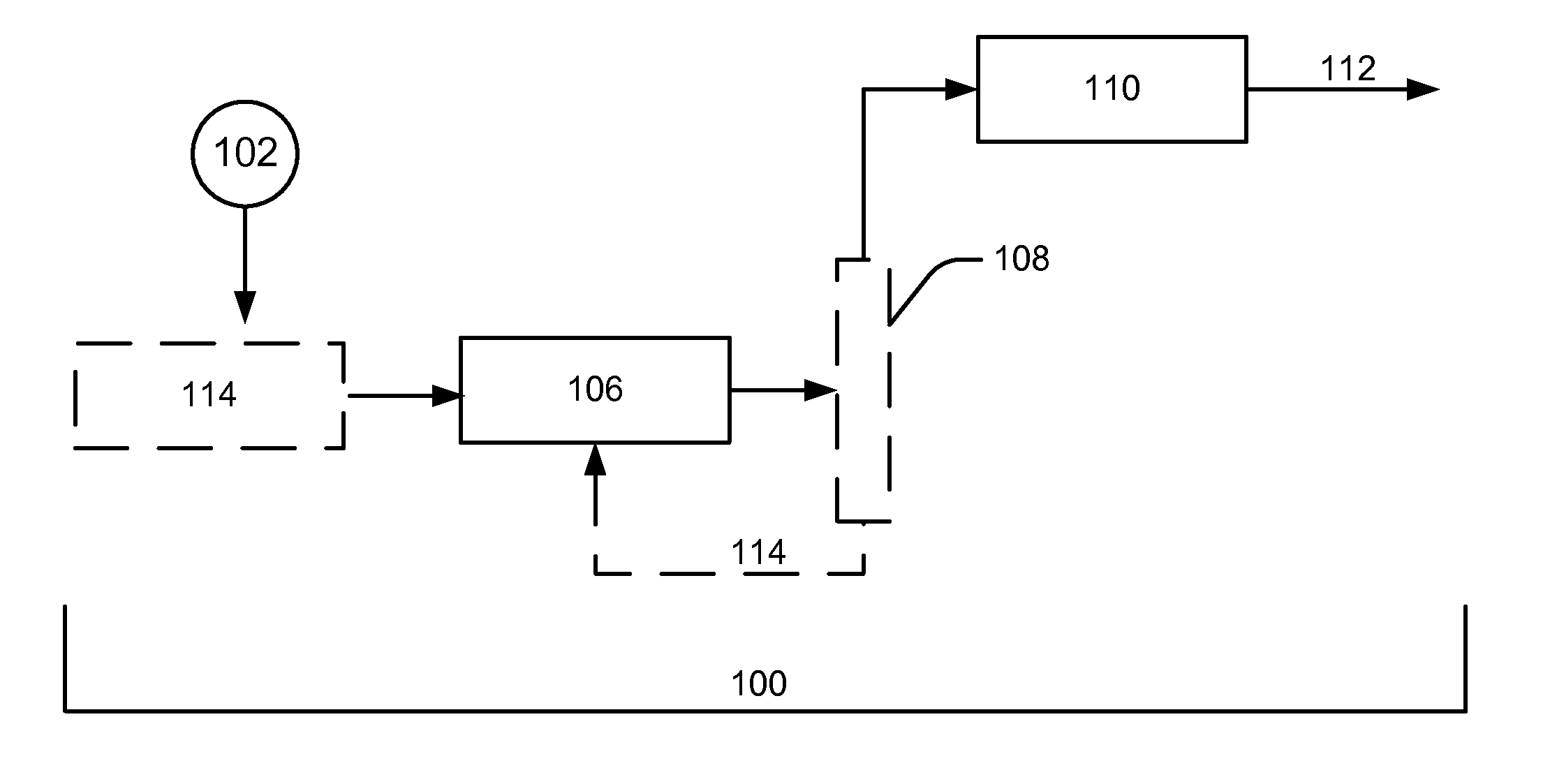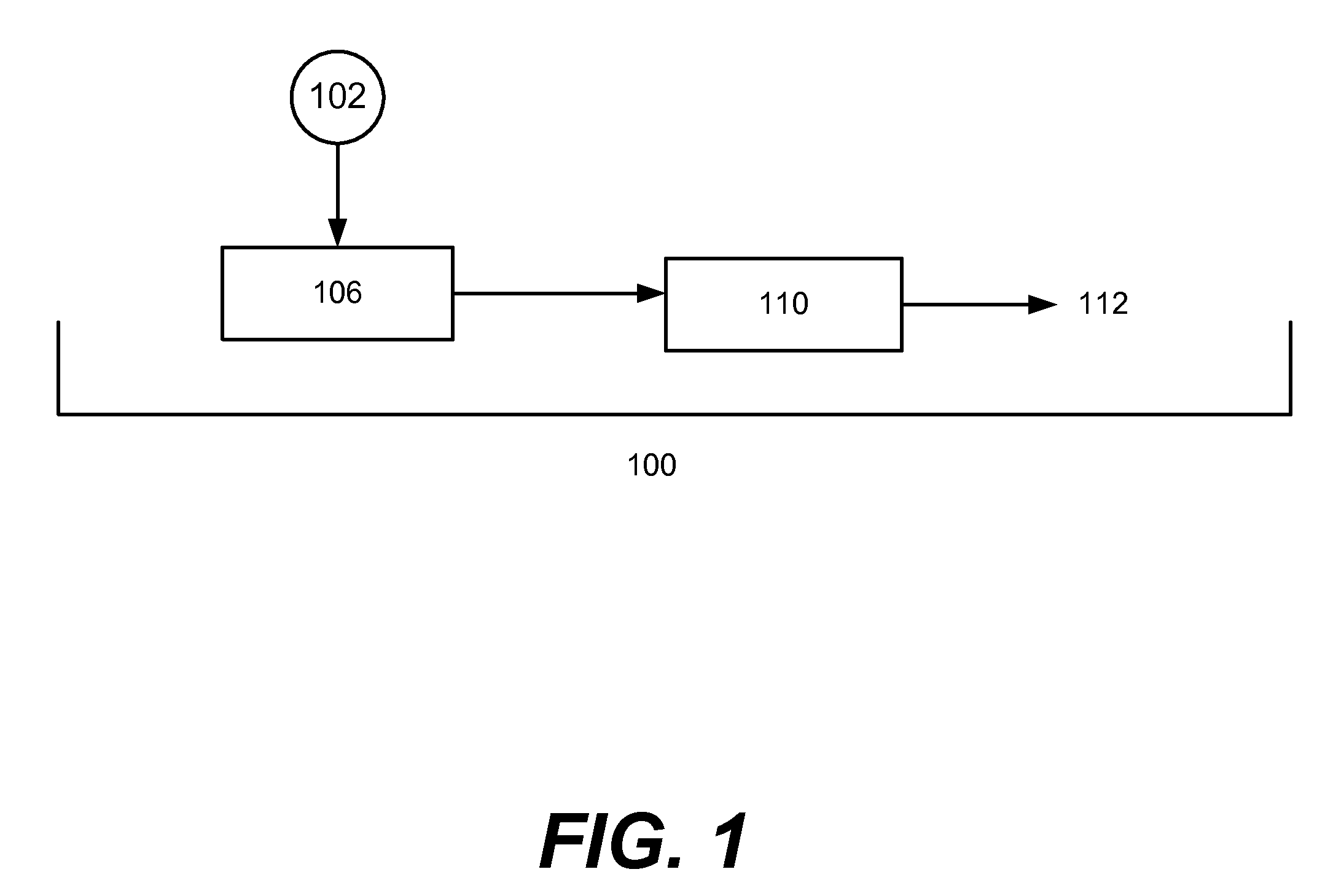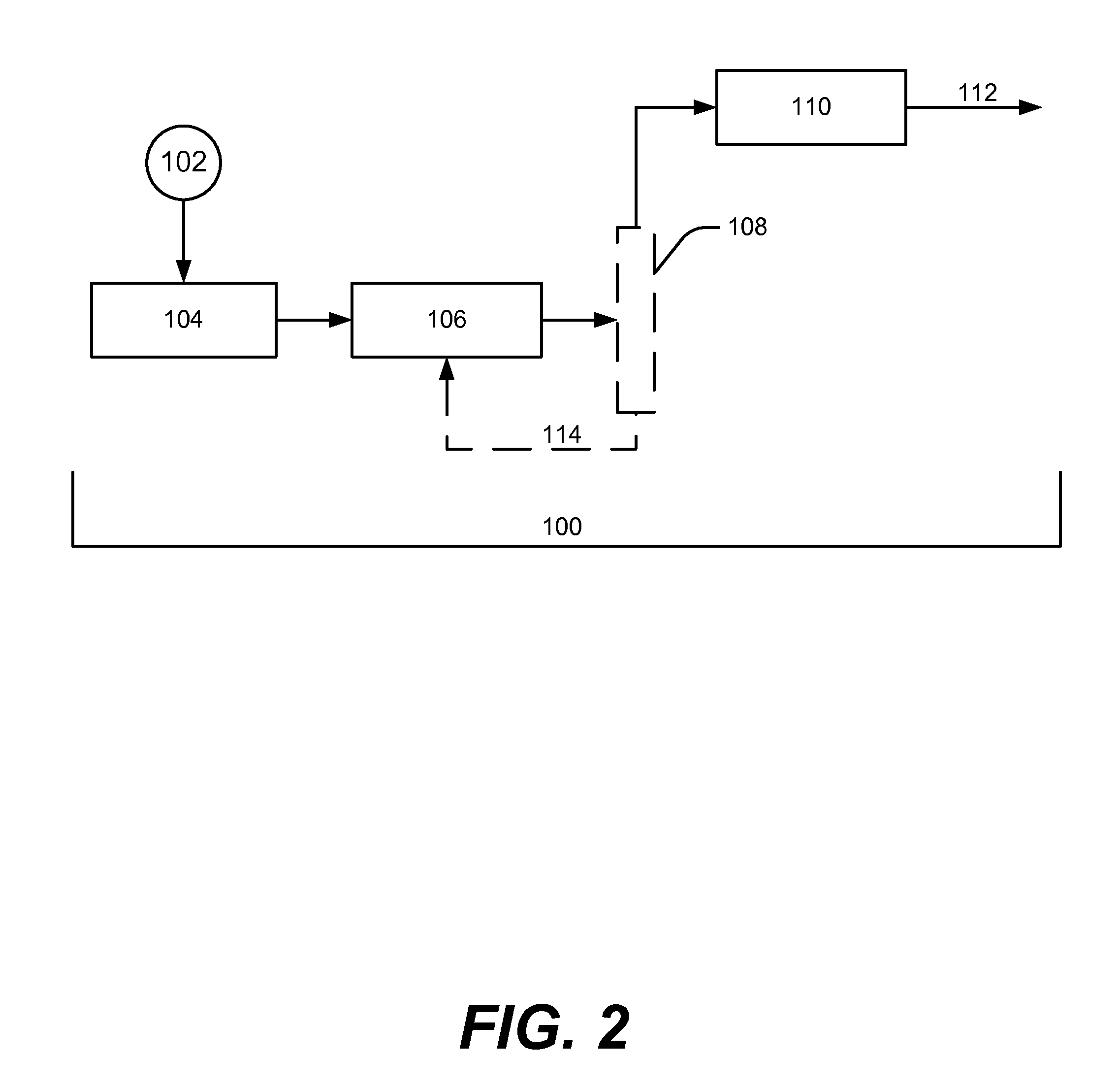Biofuels via hydrogenolysis and dehydrogenation-condensation
a technology of hydrogenolysis and biofuels, which is applied in the direction of biofuels, fuels, hydrocarbon oil treatment products, etc., can solve the problems of increasing the loss of desirable hydrocarbon products, difficult to compete with the use of traditional resources such as fossil fuels, and high cost and complexity of the process used, so as to facilitate the hydrolysis reaction and easy oxidation
- Summary
- Abstract
- Description
- Claims
- Application Information
AI Technical Summary
Benefits of technology
Problems solved by technology
Method used
Image
Examples
examples 1-14
Batch Hydrogenolysis and Aqueous Phase Reforming
[0098]In treating an aqueous mixture of carbohydrates, the carbohydrates can be “reformed” under appropriate conditions to produce hydrogen, as illustrated by formation of isopropanol (i.e., IPA, or 2-propanol) from sorbitol in Eq. 1 shown above. Alternately, in the presence of hydrogen, polyols and mono-oxygenates such as IPA can be formed by hydrogenolysis, where hydrogen is consumed rather than produced, as shown in Eqs. 2 and 3 above.
[0099]For hydrogenolysis pathways where a source of hydrogen is available (e.g., refinery offgas, or direct H2 production via renewable or non-fossil energy), the yields of biofuels may be increased via avoidance of loss of bio-based carbon as CO2. The current process provides optimized conditions to produce polyols such as propylene glycol (PG) via Eq. 2 rather than produce yield loss to CO2 via “reforming” reaction in Eq. 1 for those cases where a H2 source is available or can be economically provide...
example 15
Direct Hydrogenolysis of Biomass
[0104]For example #15, 3.59 grams of sugar cane bagasse solids (5% moisture) were added directly to the batch reactor with 60.1 grams of deionized water, to demonstrate concerted hydrolysis of biomass with hydrogenolysis of the resulting hydrolysate. 0.924 grams of Ni / SiO2-1 catalyst were used in a reaction conducted with the addition of 3500 kPa of H2 (at room temperature). Temperatures were staged for 2.5 hours at 170° C., 2.5 hours at 190° C., and 17 hours at 210° C., to allow the more readily hydrolysable C5 sugars to be extracted and hydrotreated at a lower temperature, to avoid degradation to heavy ends. The sequence was repeated for two additional cycles after addition of 3.62 grams and 3.58 grams of additional bagasse. GC analysis showed production of hydrogenolysis products ethylene glycol, propylene glycol, and glycerol at 10% of total yield, along with 5 wt % acetic acid as byproduct. Total measured yield was 55% of the injected biomass.
example 16
[0105]Experiment 15 was repeated with 0.96 grams of Ni / silica catalyst, and bagasse additions of 3.52, 3.53, and 3.61 grams for successive cycles. Temperatures were immediately ramped to 210° C., after an initial charge of 3500 kPa of hydrogen. GC analysis indicated a yield of more than 12% to ethylene glycol, 1,2-propylene glycol, and glycerol products, with conversion and solubilization of 60% of the bagasse charged to measurable products.
PUM
 Login to View More
Login to View More Abstract
Description
Claims
Application Information
 Login to View More
Login to View More - R&D
- Intellectual Property
- Life Sciences
- Materials
- Tech Scout
- Unparalleled Data Quality
- Higher Quality Content
- 60% Fewer Hallucinations
Browse by: Latest US Patents, China's latest patents, Technical Efficacy Thesaurus, Application Domain, Technology Topic, Popular Technical Reports.
© 2025 PatSnap. All rights reserved.Legal|Privacy policy|Modern Slavery Act Transparency Statement|Sitemap|About US| Contact US: help@patsnap.com



